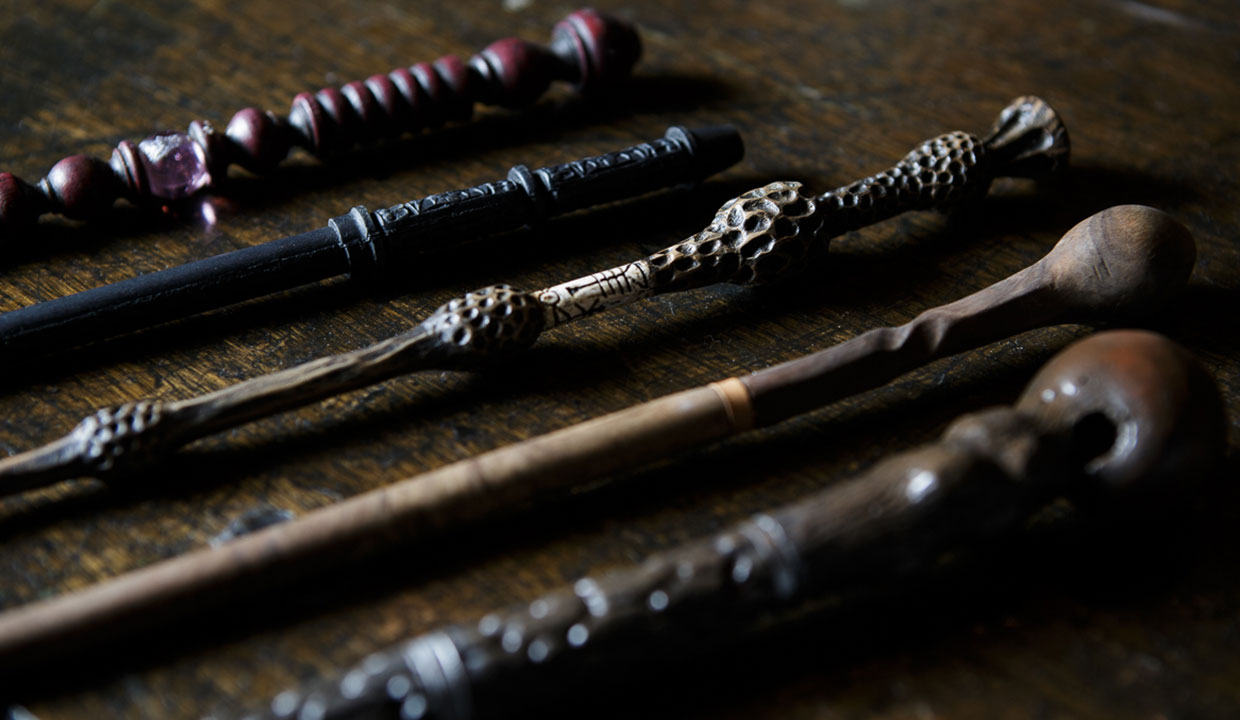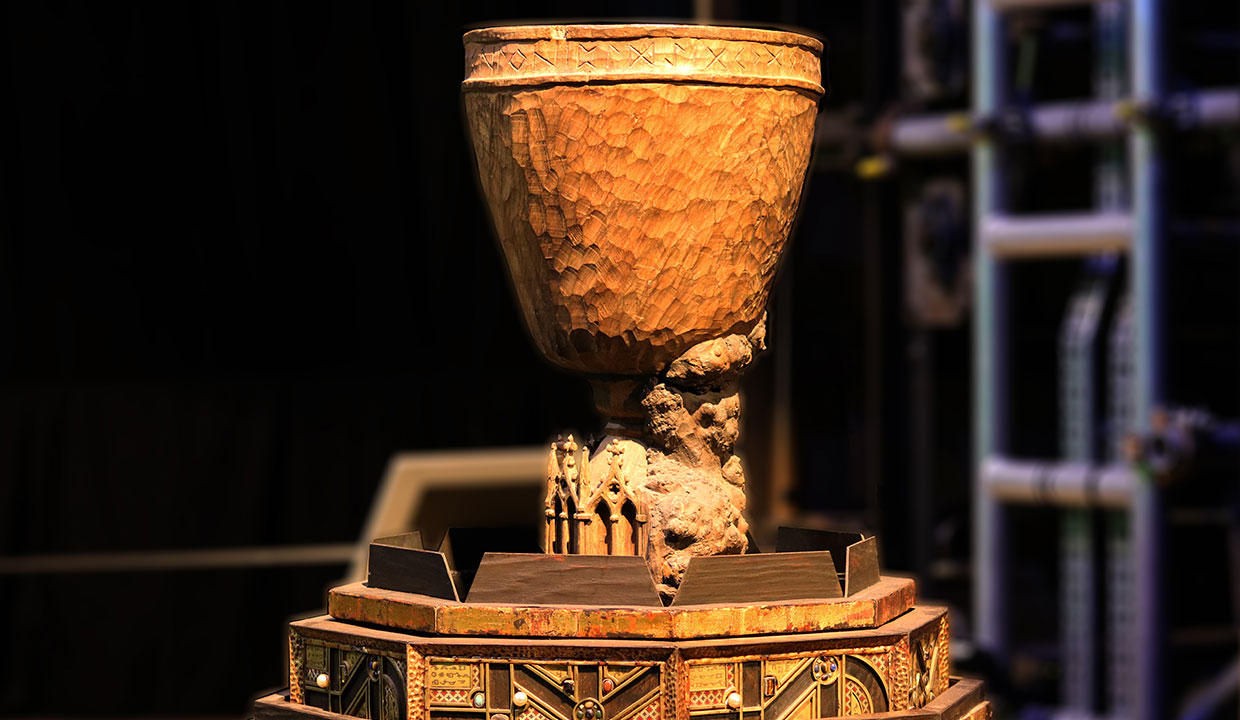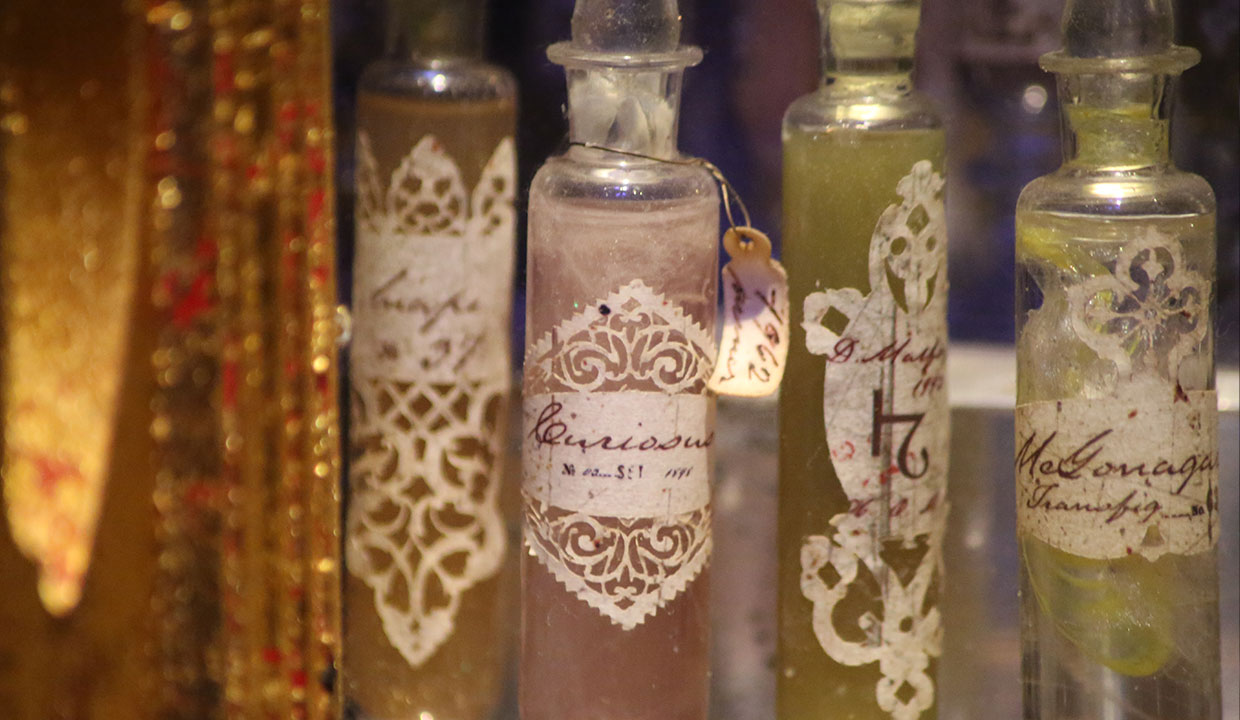
Over the course of filming, thousands of wands were created by the talented Prop Making Department. Each wand was developed with its owner in mind, unique to their personality, taste and interests. While Professor Snape’s wand is simple with few embellishments, Professor Slughorn’s is extremely ornate and even features slug-like tentacles on the handle.
In the wizarding world, wands would be crafted from a number of different woods including holly, cypress and vine, with cores of either phoenix feathers, dragon heartstrings or unicorn hair. Similarly, Propmakers created the wands seen on screen using different woods and organic materials. From there, a mould was taken, and several versions of each wand would be made from both resin and rubber so they could be used in stunts.

As seen in the fourth instalment of the Harry Potter film series, fans will recognise the Goblet of Fire from the memorable scene in which Harry is chosen as a Triwizard champion. This key prop went through many iterations and designs before filmmakers settled on the final look. Two versions of the goblet were created for different purposes, one as a hero prop and one with a SFX rig hidden inside.
The original goblet was hand-carved by Head Propmaker, Pierre Bohanna, from a single piece of wood chosen for its twists, knots, and splits to give it an organic, ancient quality. A mould of this was then taken for the Special Effects version that was rigged to propel the parchments of the four Triwizard champions.

Tucked away in Dumbledore’s office, fans will find his memory cabinet, filled with almost 900 vials, each labelled with a unique memory.
Look closely and you’ll spot familiar names like Argus Filch and Professor McGonagall. Using the Pensieve, Dumbledore could relive each memory as seen in Harry Potter and the Goblet of Fire.